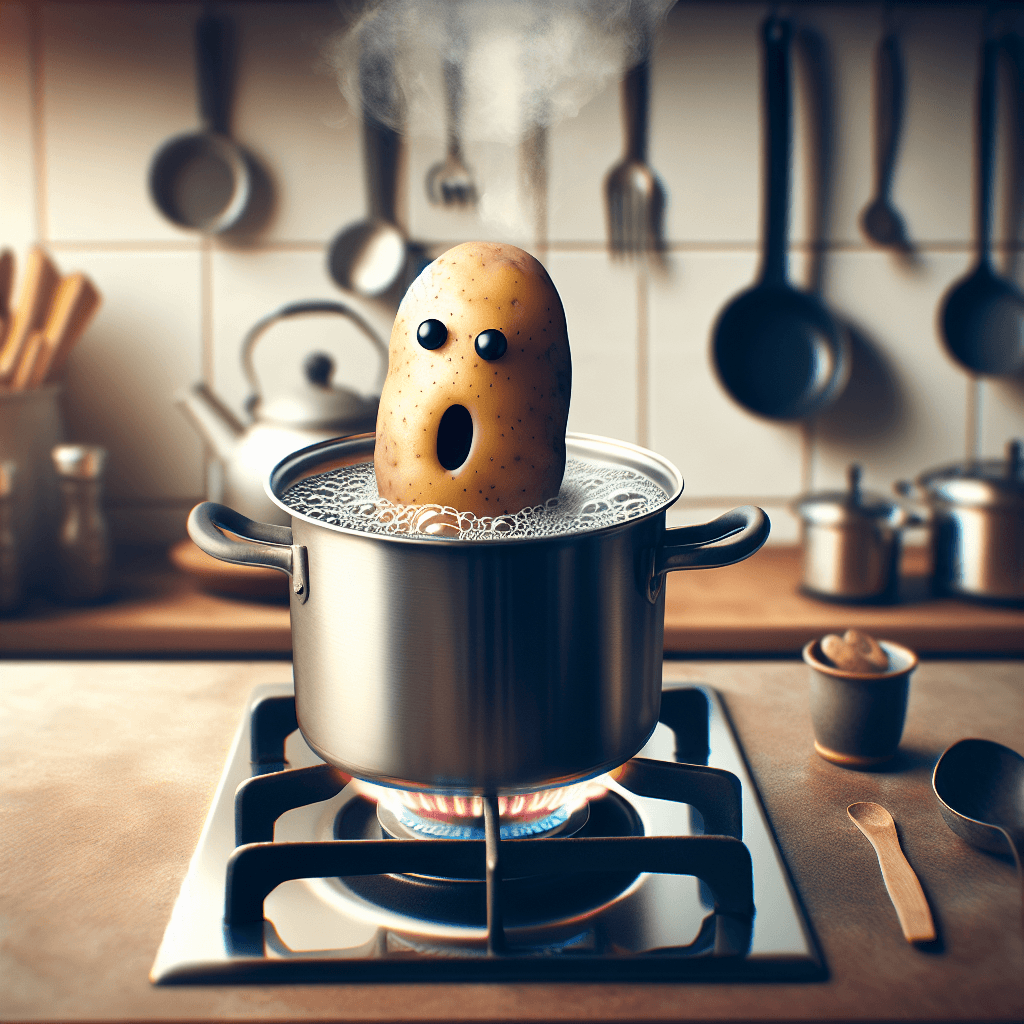Why does boiling a potato sometimes make it sound like it is screaming
That high-pitched shriek from the pot isn't just in your head—we're uncovering the surprising science behind why your dinner sounds like it's screaming for its life.


Too Long; Didn't Read
TLDR: The screaming sound is high-pressure steam. Water and air trapped inside the potato heat up, expand, and then whistle as they are forced out through tiny cracks in the skin.
The Screaming Spud: Why Does Boiling a Potato Sometimes Make It Sound Like It Is Screaming?
Have you ever been in the kitchen, preparing a meal, only to be startled by a high-pitched whistle coming from your pot of boiling potatoes? For a moment, you might wonder if the humble spud is protesting its fate. This eerie sound, often described as a "scream," has puzzled and amused home cooks for generations. But rest assured, your potatoes are not in distress. This strange kitchen phenomenon has nothing to do with pain and everything to do with fascinating, everyday physics. This post will peel back the layers on this culinary curiosity, explaining the simple science behind why boiling potatoes sometimes "scream."
It's Not a Scream, It's Steam
First, let's get the most important fact out of the way: potatoes cannot feel pain, and they certainly cannot scream. Lacking a central nervous system, vocal cords, or a brain, potatoes are incapable of experiencing emotions or producing sound in the way animals do. The "scream" you hear is not a biological response but a physical one.
The sound is, in fact, the high-pressure release of steam. Think of it like a miniature, all-natural teapot whistle. When a teapot boils, pressure builds until the steam is forced out of a tiny opening in the spout, creating a loud whistle. A potato in boiling water behaves in a remarkably similar way.
The Physics of a Boiling Potato: A Step-by-Step Breakdown
To understand the sound, we need to look at both the potato's structure and what happens to it when heated. A potato is primarily composed of water (often 70-80%) trapped within a starchy interior, all encased in a relatively tough, semi-porous skin.
When you place a potato in boiling water, a chain reaction begins:
- Heat Transfer: The intense heat from the water begins to penetrate the potato's skin, cooking it from the outside in.
- Water Turns to Steam: As the water inside the potato heats up past its boiling point (100°C or 212°F), it begins to convert into steam.
- Pressure Builds: This is the critical step. According to fundamental principles of physics, when water turns into gaseous steam, it expands dramatically, taking up to 1,700 times its original volume. This rapid expansion creates immense pressure inside the potato, pushing against the skin from within.
- The Great Escape: The potato skin acts like a pressure vessel, but it's not perfectly sealed. The built-up steam must escape. It seeks out the weakest points on the potato’s surface—this could be a small, imperceptible fissure, a bruise, a cut from the peeler, or the natural pores on the skin known as lenticels.
- The Whistling Effect: As the high-pressure steam is forced through one of these tiny openings, it creates a high-frequency vibration, which we hear as a hiss, whistle, or "scream."
Why Don't All Potatoes Scream?
You may have noticed that this phenomenon doesn't happen every single time you boil potatoes. Several factors can influence whether a potato will "scream":
- Skin Thickness: Potatoes with thicker, tougher skins, like Russets, are more likely to build up significant internal pressure before the steam finds an escape route, potentially leading to a more noticeable sound.
- Skin Integrity: A potato with an unbroken, flawless skin is a better pressure vessel. The pressure can build to a higher point before a weak spot finally gives way, causing a sudden, loud release of steam.
- Temperature Gradient: A very hot pot and a cold potato can create a more rapid buildup of steam and pressure, increasing the likelihood of the sound occurring.
Conversely, if you pierce a potato's skin with a fork before boiling (a common practice for baking), you have already created a large, stable vent for the steam to escape gradually and quietly.
Conclusion
The mystery of the screaming potato is a perfect example of science at work in our kitchens. That startling sound is not a cry for help but the simple, predictable result of trapped water turning to high-pressure steam and forcing its way out through a small vent in the potato's skin. It’s a powerful demonstration of how heat, water, and pressure interact. So, the next time you hear a whistle from your cooking pot, you don't need to feel guilty. Instead, you can appreciate the fascinating physics lesson unfolding right on your stovetop, courtesy of the humble potato.
More Articles

Why do movie punches sound so much crunchier and louder than real ones?
That sickening, bone-crunching punch you hear in the movies is a lie, and the secret ingredient is probably sitting in your refrigerator right now.

What makes a beer bottle suddenly foam over just from a light tap on top?
It’s not magic, it’s a shockwave; discover the explosive physics that turns a gentle tap on your beer bottle into an instant foamy geyser.

Why do police officers touch the back of a car during a traffic stop?
It’s not a random habit; that simple touch is a calculated, old-school tactic designed to leave a crucial and potentially life-saving piece of evidence behind.